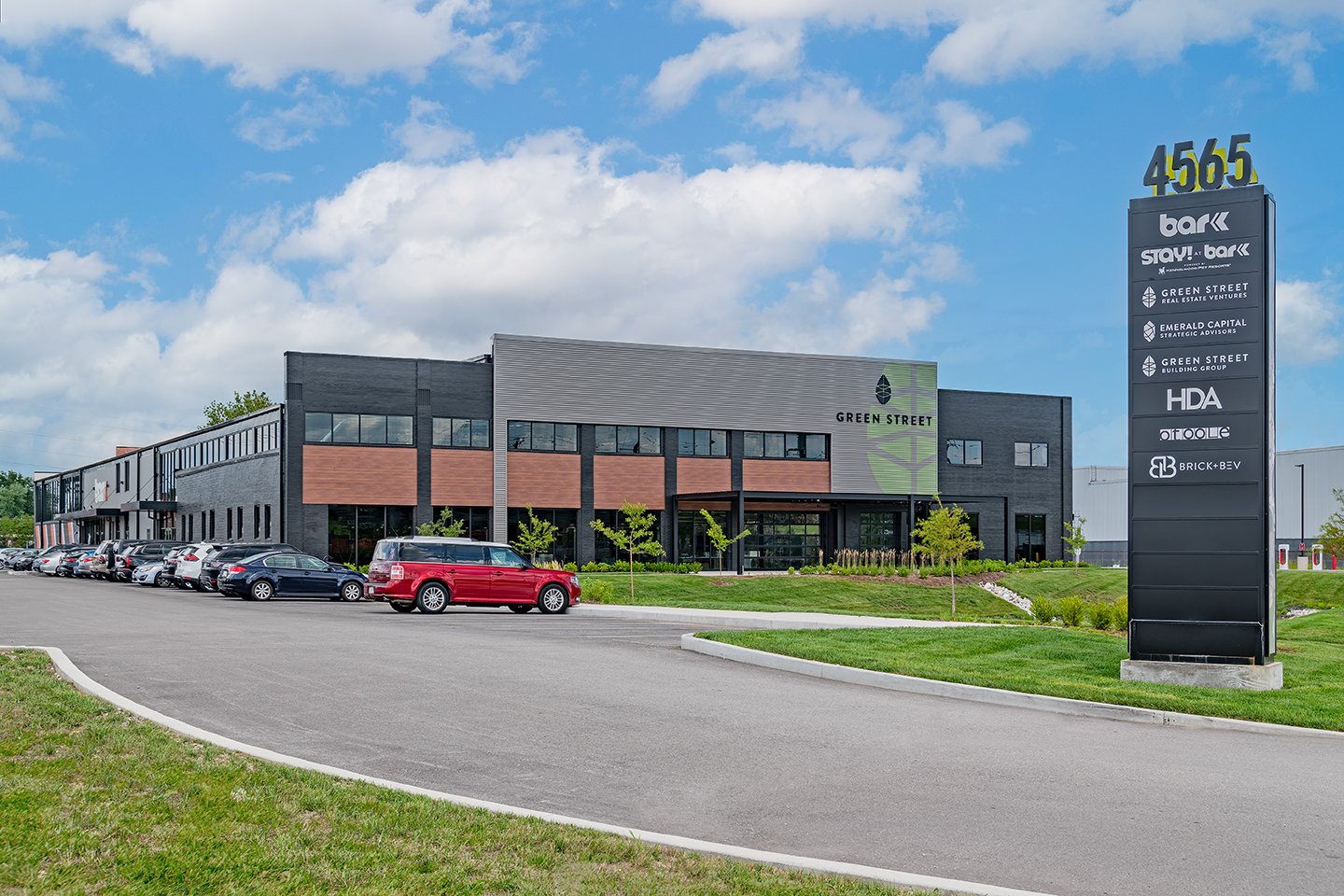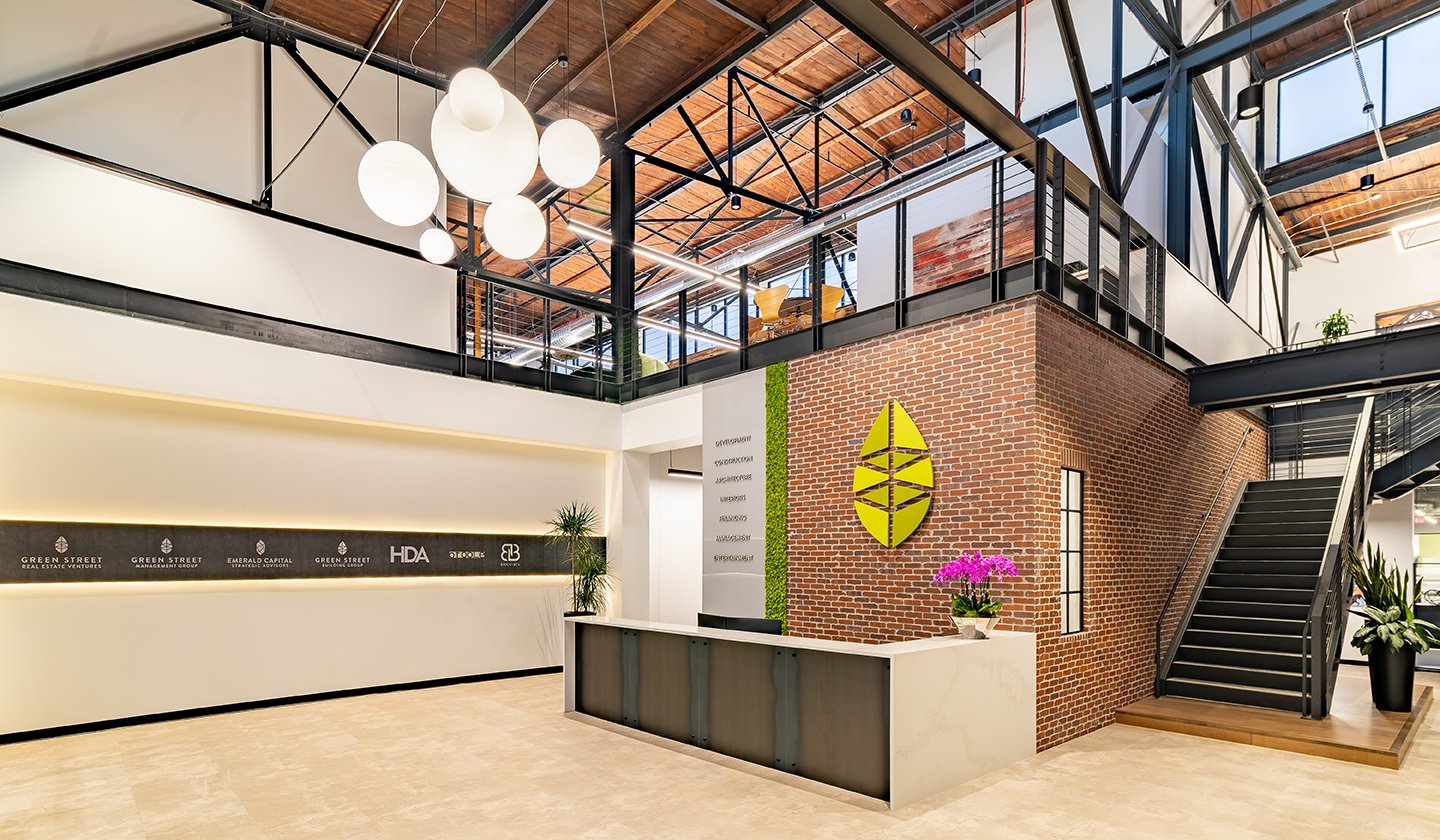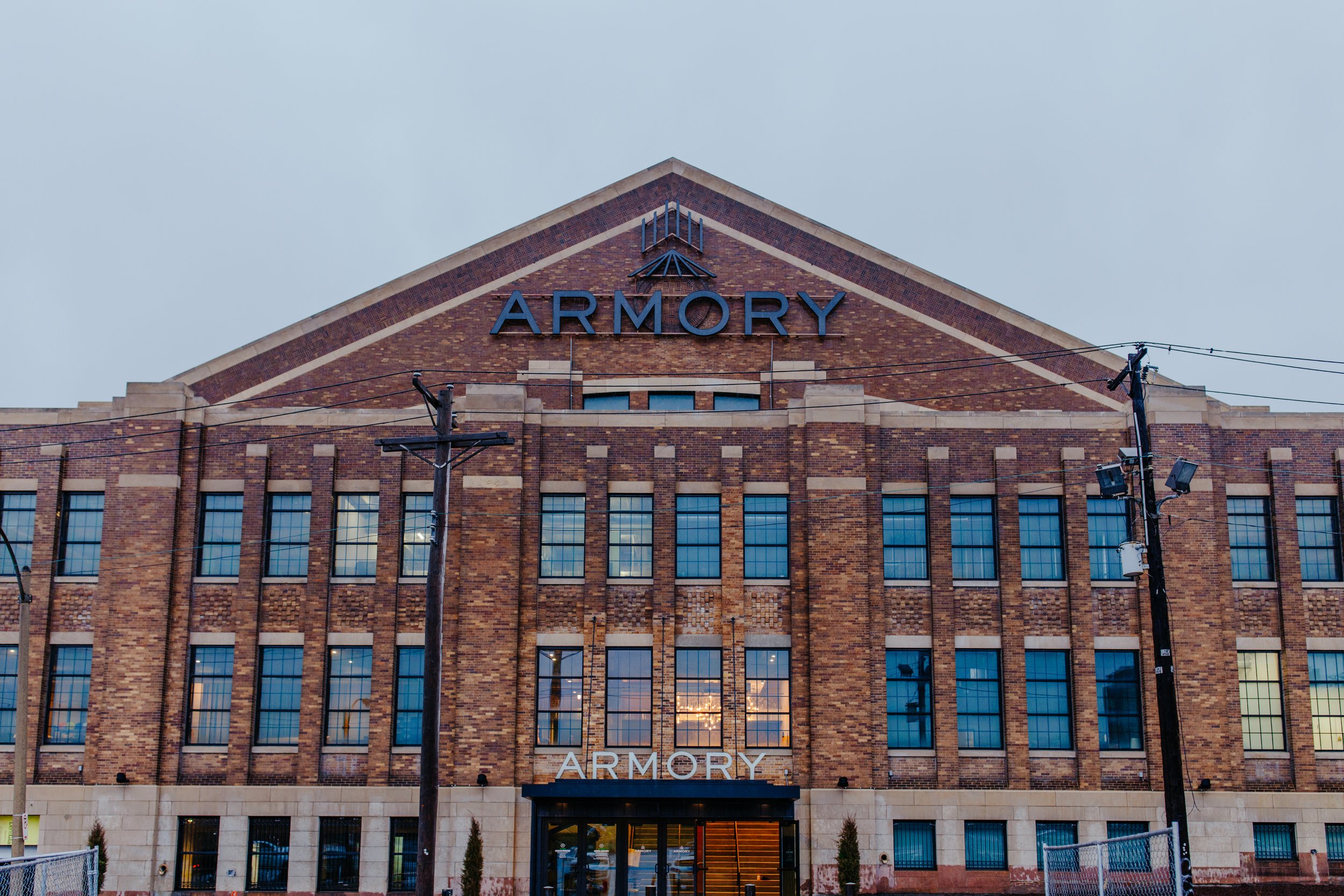Making Magic
In the past 15 years, Green Street has developed more than 5 million square feet of space in St. Louis. They’ve only just begun.
By Christy Marshall
Looking at the City of St. Louis, many see mayhem.
Phil Hulse doesn’t.
Founder and Chief Executive Office of Green Street Real Estate Ventures, he foresees a “Magic City.” The company’s approach is to buy sizable swathes of land for building apartments, family residences, offices, and, what he terms “the magic sauce,” entertainment.
Phil Hulse at the Armory. Photo by Carmen Troesser.
“A key piece is making it large enough scale in terms of a redevelopment area so you have true impact,” Hulse says. “What's happened is that more people are interested in an experiential lifestyle and that's the office, it's entertainment, it's how you live. So, all three of those things are our primary focus. How do we create workspaces that are energized, full of amenities, that bring people together, that make people want to come into the office because it feels good? If you do that, you have an environment that is not attractive to workers but that will bring them willingly into the office.”
A case in point: 4565 McRee. Green Street bought 18 acres including the old Cardinal Building Supply warehouse, which they converted it into their headquarters.
Green Street offices.
Green Street office interior.
Green Tree office interior.
“We usually take old buildings that are well located and transform them into beautiful new spaces,” Phil says.
The sleek industrial space houses all of the Green Street components and its employees: Green Street Real Estate Ventures, Green Street Brokerage + Management, Green Street Building Group, HDA Architects, O’Toole Design Associates, Emerald Capital Strategic Advisors, Chapters Living (senior living) and the newest addition, Brick and Bev.
Across the street, the ground has broken on The Rail, an $81 million 269-unit apartment complex. Next door to the Green Street offices is Bar K, the city’s one-and-only park for dogs and restaurant/bar for the owners.
Terra at the Grove.
“Bar K [Green Street’s entertainment tenant] draws over 300,000 people a year,” Phil says. “So just think of what bringing that number of people into the neighborhood does. They see what the Grove is like and what other areas of our town are like.”
Bar K St. Louis.
Bar K St. Louis interior.
Green Street has done the same thing with the Armory, a 220,000 square foot space originally built in 1938 to house the 138th Infantry Missouri National Guard Armory. A $60 million investment, it’s now the city’s biggest bar and largest indoor entertainment venue. It includes everything from bars to restaurants, concert space, a two-story slide, 40 interactive games, dozens of tv screens. Under the auspices of Green Street’s affiliate Bricks and Bev, there are plans on adding more spaces on the lower level, additional event space, as well as a rooftop bar.
Once the Armory is fully functioning, Hulse estimates it will draw more than 1.5 million annually. Green Street also bought 21 acres to form to the Armory District.
The Armory.
The Armory interior.
“St. Louis is filled with historic buildings,” he says. “If you find one of those gems, our position is how do you activate it? It changes how people see the city. It also gives us an opportunity to create these other spaces that are life, work and play experiences.”
When asked about suburbanites’ fear of venturing beyond Forest Park, Hulse says the business owners themselves have taken the lead to help the police. Every month, leaders from Cortex, BJC, IKEA, the City Foundry, St. Louis University and Green Street meet to discuss what’s happening and to swap information.
“We have our own security,” Phil says. “Everybody has dialed it up, and everybody knows that crime is our enemy. If the criminals know that you're out there with watchful eyes and creating an environment that makes it clear that they're not welcome, it works.
“We have so much momentum going, we can't let the negative talk slow us down,” he adds. “Yes, it's there and we need to address it, but we can't let that stop us.”
Another key element in the Green Street urban development plans are the new segments of the Greenway, including the 20 miles of Brickline. “All of a sudden, you have a way to get somewhere outside of a car,” Hulse says. “And typically, when you build greenways, more people want to be next to that trail than anywhere else,” adding that it becomes primo real estate for restaurants, offices, and residential.
Sustainability has always been a key factor for Green Street, since its inception in 2008 (and hence its moniker). In the lot outside their offices on McRee are a dozen Tesla charging stations.
“I've always been sensitive to climate change and being sustainable in how you do business,” Hulse says. “It really opened up a new window of how you can create these dynamic buildings that have good sustainable principles, because the buildings that we are in have the biggest impact on our environment. They consume a lot of energy. So, you’ve got to rethink about what are the heating and cooling systems? How do you orient buildings to use natural light to create a better feeling? How do you use the right materials? How do you take sites that are underutilized, that are in good locations so people can live, work, and play in the same area and so they don't have to drive a car for 30 minutes or an hour.”
Green Street’s visions for the city range far beyond midtown. The company recently announced plans for a high-rise hotel with jazz club in Clayton on the old World News site, a joint venture with Midas Hospitality; apartments and retail branch and corporate offices for Sterling Bank at 50 South Bemiston; a mixed-use development on 40 acres in Brentwood along Manchester from Hanley to near Brentwood roads; converting the old 54-acre Carondelet Coke plant (now dubbed the River City Business Park) on South Broadway; transforming 100 acres on the north riverfront between Broadway and Wall Street, as well as building hotels on Market (with joint venture partner Midas), in Clayton, and Brentwood. They have done or are planning projects in both North and South St. Louis.
The biggest obstacle Hulse sees is the St. Louisans’ mindset. He’s working hard to try to get the residents to see the city through a more positive lens.
“I bring investors in here from all over the country and they are blown away by what's going on here,” Phil says. “Most of our big lenders who come here are from the coasts or Chicago or Texas. They come in and go, ‘Wow.’ What they see is what we should be seeing. We take pride in downplaying who we are and what we're doing versus being cheerleaders.
“Well, I think we have an opportunity to be that Magic City, and we're headed that way.”









